In Mississippi, Deer season is typically open in the fall through the winter, from early October to the end of January. The state is divided into six Deer Management Units. All units follow the same season dates. However, the bag limits and the definition of a Legal Buck vary between units.
There are different types of deer seasons, including Archery, Youth Season, Antlerless Primitive Weapon, Gun with dogs, Primitive Weapon, and Gun without dogs.
Below we will discuss the various seasons, any licenses that may be required, and the regulations for hunting deer in Mississippi. All hunters should review the current Mississippi Department of Wildlife, Fisheries, and Parks (MDWFP) outdoor digest for current unit maps, license and permit requirements, and regulations.
Hunting License Requirements
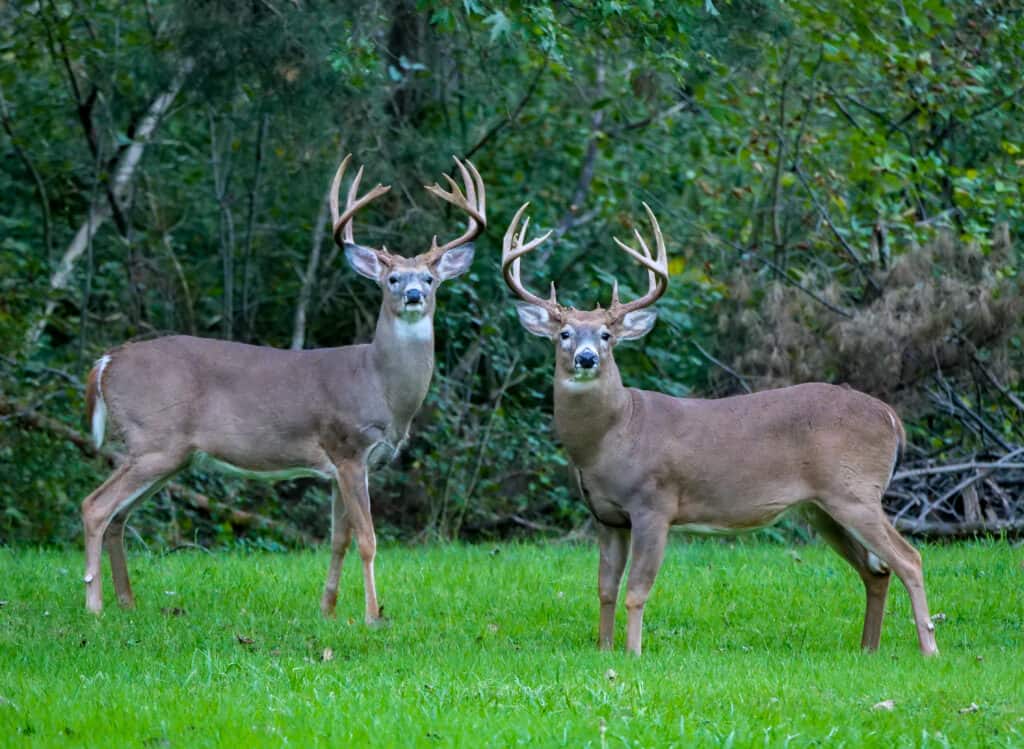
Deer hunters that are not residents of Mississippi but would like to travel to the state to deer hunt must purchase a Mississippi non-resident hunting license.
©iStock.com/Ralph Navarro
All Residents of Mississippi that wish to deer hunt and are between the ages of 16 and 64 must purchase a hunting license. Any resident that is 65 or older is not required to purchase a hunting license. However, they must carry a state-issued ID with them at all times, documenting their age.
Deer hunters that are not residents of Mississippi but would like to travel to the state to deer hunt must purchase a Mississippi non-resident hunting license. This requirement applies to everyone except minors under the age of 16. Hunting licenses are available in a few different combinations depending on the hunter’s interests. For deer hunting, residents must at least have an All Game Hunting license to hunt deer during the gun season.
To hunt during the Archery, Primitive Weapon, and/or Crossbow seasons, residents must also purchase an Archery/Primitive Weapon/Crossbow Permit. If a hunter is also interested in Turkey hunting, a Sportsman License is available that includes this deer permit and also a turkey hunting permit. Other permits that may be needed include a Velvet Season Permit for the early Archery season and a Wildlife Management Area User Permit for those that would like to hunt in a state-owned Wildlife Management Area.
Lifetime Licenses are available, which include a Sportsman license, WMA user Permit, and Saltwater fishing privileges for the lifetime of the individual. The lowest-cost lifetime license is for children 12 and younger, so if your family includes avid outdoorsmen, this is a great option for your child.
Non-Resident Licenses
For non-residents, the licenses and permits are the same, with a few differences. A non-resident All Game Hunting license is required, and options are available for one-year, seven-day, and three-day licenses. However, this license does not include any deer hunting privileges. A Non-resident Deer Permit is required to hunt deer in any season.
For the Archery, Primitive Weapon, and/or crossbow seasons, hunters must also have a non-resident Archery/Primitive Weapon/Crossbow Permit. A non-resident Wildlife Management Area User Permit is also available for hunters who want to hunt on state-owned WMAs.
Safety Courses
Anyone born after January 1, 1972, wishing to purchase a license must successfully complete a hunter education course approved by the MDWFP before the license can be purchased. Children ages 10-11 must attend an in-person classroom course, while anyone over 12 can take the course online. See the MDWFP website here for more info and to find a course near you or online. Children between 12 and 16 may hunt alone if they have completed the course.
Children in this age group who have not completed the course can hunt but must be accompanied by and under the direct supervision of a licensed adult of at least 21 years old. All Children under the age of 12 must also be accompanied by an adult. A resident over the age of 15 who has not completed the course may hunt if they purchase a resident apprentice hunting license. This license can only be purchased for one season, and the hunter must be accompanied by a licensed adult at least 21 years of age.
All licenses can be purchased online or by authorized agents throughout the state. Agents typically include sporting goods and hunting supply retailers.
Deer Season Types
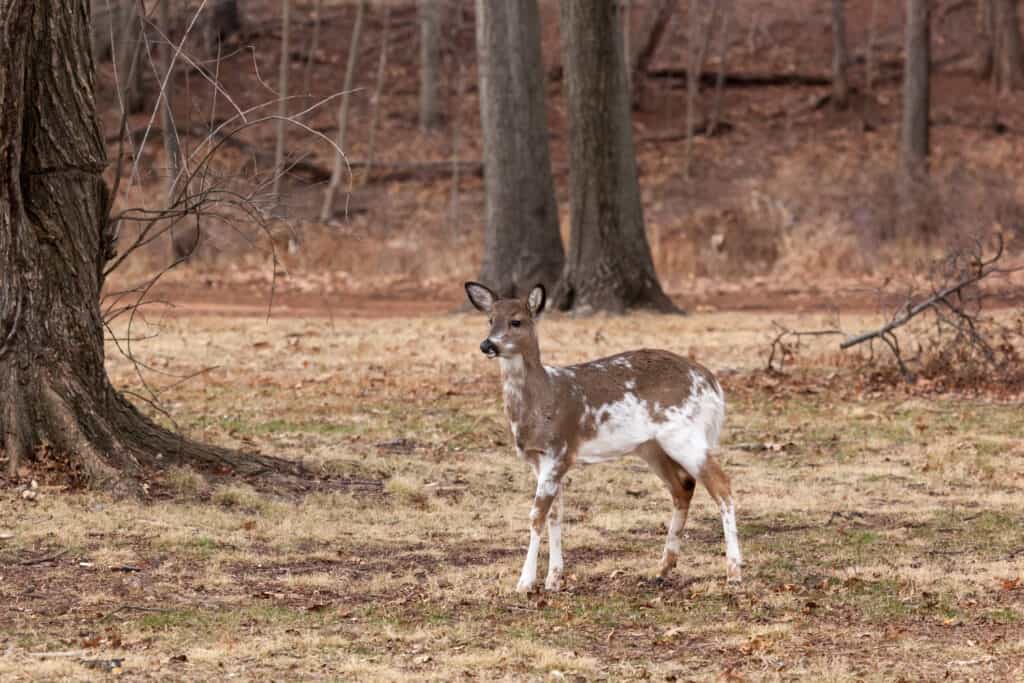
For non-residents, a Non-resident
Deer Permit is required to hunt deer in any season
.
©iStock.com/luvemakphoto
There are five types of deer seasons in Mississippi: Archery, Primitive Weapon, Gun with dogs, Gun without dogs, and Youth season. Archery season is open from the first Saturday in October until the third weekend in November. There is also an early Archery season called “Velvet Season,” open for one weekend in mid-September, and a late Archery season during the last two weeks of January. There are three Primitive Weapon seasons.
The first is for Antlerless deer only and is open for two weeks in early November. The second is open for two weeks in early December, and the third is for the last two weeks in January (same as the late Archery season).
Gun season has separate seasons when dogs may or may not be used. Firearms season with dogs is open at two different times, the first from the third Saturday in November until December 1, and the second is open the final week of December through mid-January.
Gun season without dogs is open the third week in December. Youth season is open in two separate seasons. The first is open on the first Saturday in November and lasts for two weeks. Immediately after this, the second season is open until the end of January.
Season Type Regulations
Each season type has different hunting method requirements and weapons that may be used. Details of each season are listed below:
Archery and Crossbow Season
During this season, archery equipment such as Longbows, recurves, compound bows, and crossbows may be used. There are no minimum or maximum draw weight requirements. Fixed or Mechanical broadheads may be used, and there are no requirements on the arrow length. Firearms of any type are not allowed during archery season.
Primitive Weapon Season
During this season, archery equipment may be used along with primitive firearms. Primitive firearms include single or double-barreled muzzleloading rifles and shotguns or single-shot, breech-loading rifles that use metallic cartridges.
Muzzleloaders must be at least .38 caliber. Use black powder or a black powder substitute with percussion caps, #209 shotgun primers, or flintlock ignition. Black powder substitute is designed and intended to be used as a propellant in black powder firearms and omits modern smokeless powder.
Muzzleloading shotguns must fire a single projectile or slug; buckshot is not allowed. Single-shot rifles that use metallic cartridges must be at least .35 caliber and have an exposed hammer. The metallic cartridges may be loaded with either black powder or modern smokeless powder. Telescopic sights are allowed on primitive firearms. Any modern firearm that uses cartridges and is not a single-shot type is not allowed.
Gun Season
During the Gun seasons, there are no restrictions on caliber or magazine capacity. Primitive weapons may also be used during this season. There are two separate seasons when dogs may or may not be used.
Youth Season
During Youth season, only young hunters 15 years old and younger hunters can use any legal firearm or archery equipment. In the first two weeks, either sex of deer may be harvested. During the second part of the season, youths must follow the legal deer criteria for their hunting unit.
Bag Limits
The bag limits for deer hunting in Mississippi, and particularly what is defined as a “Legal Buck,” differ depending on the Deer Management Unit (DMU) the deer was harvested from. The statewide bag limit for antlered deer is one per day and three per annual season, except in the North Central DMU, which is one per day and four per season. One of the three antlered deer may have hardened antlers that do not meet the legal buck antler requirements for the DMU where it was harvested.
In the North Central DMU, there are no antler requirements other than the deer must have hardened antlers. In other places, there are minimum requirements on the antler size that can be harvested. In the Northeast, East Central, Southwest, and Southeast Units, the Inside spread must be at least 10 inches, and the main beam must be at least 13 inches. In the Delta unit, the inside spread must be 12 inches, and the main beam must be at least 15 inches.
To estimate the spread of a deer’s antlers, the deer should be observed from the front with the buck’s ears in the alert position. In this position, the distance between ear tip to ear tip is approximately 14 inches. If the outside of the antlers is one inch inside the ear tips on each side, the inside spread is approximately 10 inches.
To estimate the main beam, the deer must be observed from the side. If the front tip of the antlers extends to the front of the eye, the main beam is approximately 13 inches. These estimates do not apply to the Delta unit, where the deer are proportionately larger.
The same visual estimation can be done in the Delta unit. For the inside spread, the distance from ear tip to ear tip is approximately 15 inches when the deer is alert. If the outside of the antlers reaches both ear tips, the inside spread is approximately 12 inches.
For the main beam, while observing the deer from the side, if the tip of the antlers reaches mid-way between the front of the eye and the nose, the main beam length is approximately 15 inches.
For antlerless deer, the statewide bag limit is five per year, except in the North Central and Southeast DMUs.
In the North Central DMU, the bag limit is ten antlerless deer per year, while in the Southeast DMU, the bag limit is two per year. There is no daily bag limit on antlerless deer except in the Southeast DMU, which is one per day. An antlerless deer is a male or female deer that does not have a hardened antler above the natural hairline.
Other Regulations To Consider
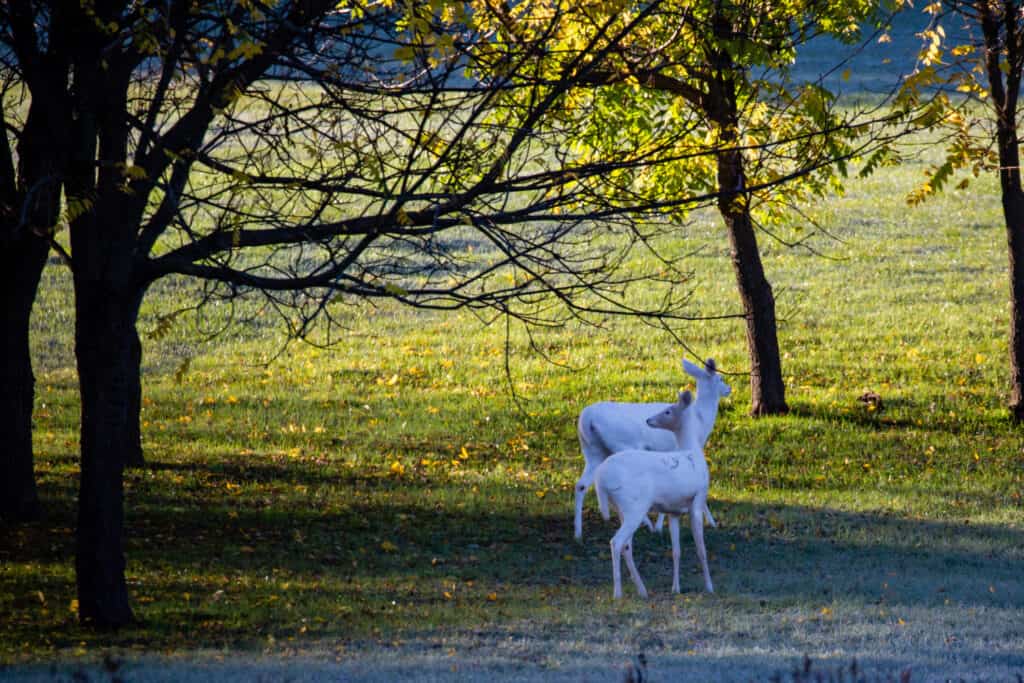
Reporting your deer harvest provides the state with data that can be used to conserve the state’s deer herd.
©iStock.com/Michael-Tatman
There are some key rules and regulations to be aware of before deer hunting in Mississippi. Below is a partial list of some of the notable ones. This is not a comprehensive list of every rule, so be sure to read and understand the rules that may apply to you.
- You must have permission from the landowner to deer hunt on private land. To hunt in State-owned Wildlife management areas, you must have a permit and follow the rules for that area.
- Anyone who purchases a license under someone else’s name or any other false information is guilty of a felony and can face a fine of $2,000 and/or spend up to one year in prison.
- Hunting hours are 30 minutes before sunrise to 30 minutes after sunset.
- Hunting with the aid of bait or live decoys is not allowed. Electronic calls are also not allowed while hunting deer.
- Dogs can only be used to take deer during the specified gun season. Dogs are not allowed during the Archery or primitive hunting seasons.
- Shooting from or across any public road, highway, railroad, or right-of-way is not allowed.
- Shooting any animal from a motorized vehicle, including automobiles or watercraft, is prohibited unless the vehicle’s movement has completely stopped.
- Hunting deer at night with lights is not allowed (spotlighting). Anyone who shines a light into land on either side of a public road with a firearm in their vehicle is considered spotlighting.
- Disposing of any carcass or animal parts on the right-of-way of a road or highway or private property without permission from the landowner is not allowed.
- Selling the meat from a deer that was harvested is not allowed.
- During any firearm season, every hunter, regardless of their hunting method, must wear an outer garment that is at least 500 square inches of solid fluorescent orange in full view. Mesh or camouflage orange with a broken pattern could not be toward the 500 square inches. Hunters in a tree stand that is elevated 12 feet or more above the ground or hunters in a fully enclosed blind are not required to wear the orange garment. However, orange must be worn while moving from or to the stand or blind.
Safety Regulations
Anytime firearms are involved, safety should be a priority to prevent an accident. Every hunter should understand and follow the four basic rules of firearm safety. Make sure you are comfortable with your firearm before
In Mississippi, there are very specific requirements for a Legal buck, so you must be able to properly observe and verify your target deer before taking a shot. Just as important, observe what is beyond your target deer. If you miss your shot, is there another deer you may hit instead? You could possibly take a deer that is not allowed by your bag limit.
Even more important, there should not be any buildings or roads where people may be beyond your target deer. You are responsible for every projectile you fire, and being careless could result in huge consequences. Stay calm, be patient, and wait for the next deer if you are unsure.
Hunting from an elevated position is a popular option in Mississippi. A portable tree stand is an easy way to hunt in various areas throughout the season. Most people believe that hunting accidents are typically firearm related.
There are more accidents from falling while hunting from a tree stand than from any other type of hunting accident. Make sure you understand your tree stand, practice with it before your first hunting trip, and always inspect it the day before using it.
Always use a full-body safety harness and connect to a safety line before your feet leave the ground. Most hunters fall while climbing up or down out of the stand. Do not try to carry any weapon or bag while climbing, as it may cause you to lose your balance. Use a rope or line and pull it up after you are safely in the stand. Also, ensure any firearm is pointed away from you and is unloaded when you pull it up.
Chronic Wasting Disease in Mississippi
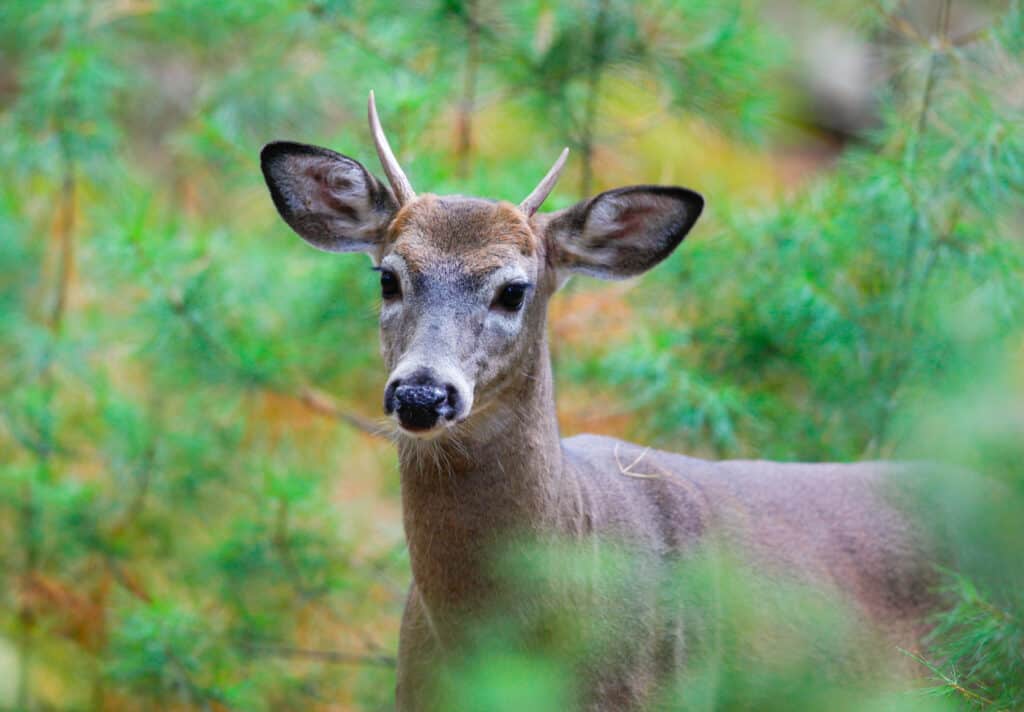
An infected deer spreads the disease through bodily fluids; the prions are shed in the saliva, feces, blood, and urine.
©iStock.com/Louise Wightman
Chronic Wasting Disease (CWD) is a contagious disease that affects cervids such as elk, white-tailed deer, and mule deer. CWD is always fatal and is caused by an abnormal protein called a prion. The prions multiply in an infected deer and are found throughout the deer’s body but in a higher concentration in the eyes, lymph nodes, brain, and spinal column.
Some deer may be infected for a year or more before they show any symptoms. Symptoms include drastic weight loss, listlessness, stumbling, and confusion. An infected deer spreads the disease through bodily fluids; the prions are shed in the saliva, feces, blood, and urine. Other deer can become infected by direct contact with another infected deer or through contact with the prions in the environment.
Since the prions can survive in the soil, once the disease is in an area, it is impossible to remove it.
CWD has been detected in many states and Canadian provinces. In 2018, a four-year-old buck was observed by a hunter that was only 96 pounds. The deer died, and after being tested, it was confirmed to be CWD. As of 2022, over 130 deer have tested positive for CWD in nine counties in Mississippi. The MDWFP has enacted a CWD response plan that can be found here.
A CWD Management zone has been established in eleven northern counties and three counties in the west-central part of the state. Any deer harvested in the zone may not leave the zone unless it has been fully processed for consumption and/or taxidermy has been completed.
The meat must be fully deboned and packaged. Antlers must be removed from the head with no tissue attached, and hides must not have the head attached. Any other carcass parts must not leave the CWD zone. In addition, supplemental feeding of deer is banned inside the CWD management zones. Feeding deer causes them to congregate in an area, which could cause the disease to spread more quickly.
During the early Velvet Buck archery season, all harvested bucks must have a sample submitted for testing. This testing aims to detect CWD early before an infected deer can spread the disease. The MDWFP also has over sixty sample drop-off sites throughout the state where the general public can bring deer heads for testing.
Hunters should preserve the head by freezing it with at least 6 inches of the neck attached. The antlers and skull plate should be removed if the hunter wants them, as the head will not be returned. Each site has freezers and instructions for obtaining the test results.
CWD has not been found to affect humans. However, it is recommended to take certain precautions. Wear rubber or latex games when field dressing or handling the carcass. Avoid sawing through bone, the spinal column, or the brain.
Store all animal parts in a leak-free container when transporting them. The unwanted portions of the carcass should be left at the harvest site, double bagged, and sent to an approved landfill or buried at least 8 feet in the ground. All equipment should be cleaned and sanitized with a 50:50 bleach and water solution. Have your deer professionally processed if possible. Do not consume meat from a deer that appears sick or has tested positive for CWD.
Tagging, Field-Dressing, and Transport
Once you harvest a deer, most hunters usually field-dress it at the site of the kill. Don’t forget that if you have harvested deer inside a CWD management zone, you may not transport it outside the zone.
Mississippi does not have a formal tagging system like most other states do. There is a voluntary harvest report that you can submit to the MDWFP. This can be done on your mobile device with the MDWFP app. Reporting your deer harvest provides the state with data that can be used to conserve the state’s deer herd. More information on reporting your deer harvest can be found here.
Fines and Other Punishments
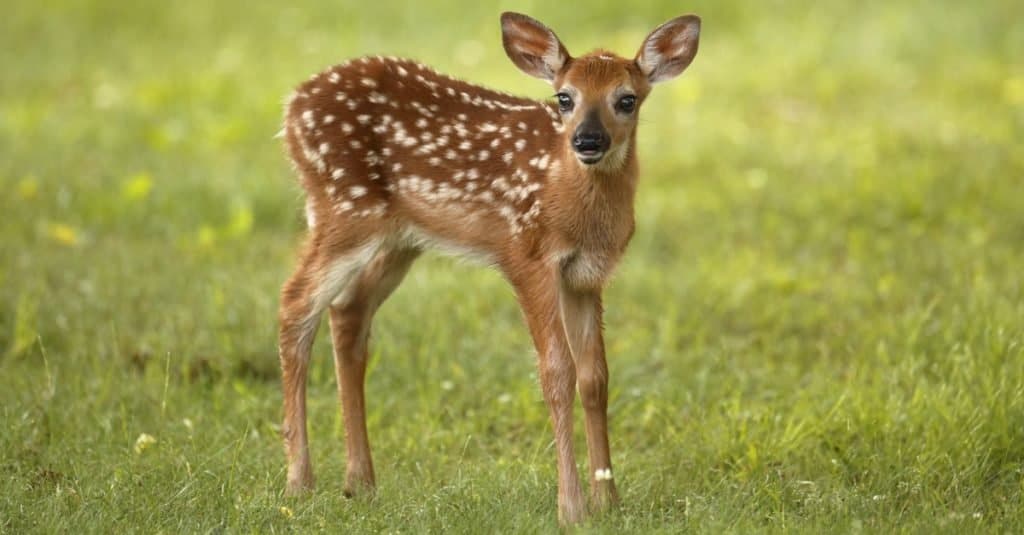
Anyone convicted of taking a deer out of season may be fined not less than $100.
©Paul Tessier/Shutterstock.com
Taking a deer in Mississippi illegally can result in fines, loss of hunting privileges, loss of your firearm or bow used to take the deer, and even jail time. Anyone convicted of taking a deer out of season may be fined not less than $100, and their hunting license may be revoked for one year. Anyone convicted of spotlighting deer at night could face a minimum $2,000 fine and lose their hunting, trapping, and fishing privileges for one to three years.
Any equipment being used is subject to seizure, including weapons and vehicles. In some cases, if multiple laws are broken, fines can stack up and be substantial. Any fines do not include court costs or lawyer fees that you may be responsible for if your case goes to court. All hunters should read and understand all the rules and regulations for deer hunting in Mississippi before each season, even if they are experienced hunters.
There can be changes each year, and if you are not aware, you could be inadvertently breaking the law. Do not assume that the rules are the same as last year. Do not assume the rules are the same as your home state. Not knowing the rules could be considered negligence and a costly mistake.
Up Next
The photo featured at the top of this post is © Michael Sean OLeary/Shutterstock.com
Sources
- eRegulations, Available here: https://www.eregulations.com/mississippi/hunting/white-tailed-deer-hunting
- Mississippi Department of Wildlife, Fisheries, and Parks, Available here: https://www.mdwfp.com/wildlife-hunting/
- Mississippi Department of Wildlife, Fisheries, and Parks, Available here: https://www.mdwfp.com/media/303463/2022-2023-hunting-seasons.pdf
Thank you for reading! Have some feedback for us? Contact the AZ Animals editorial team.







